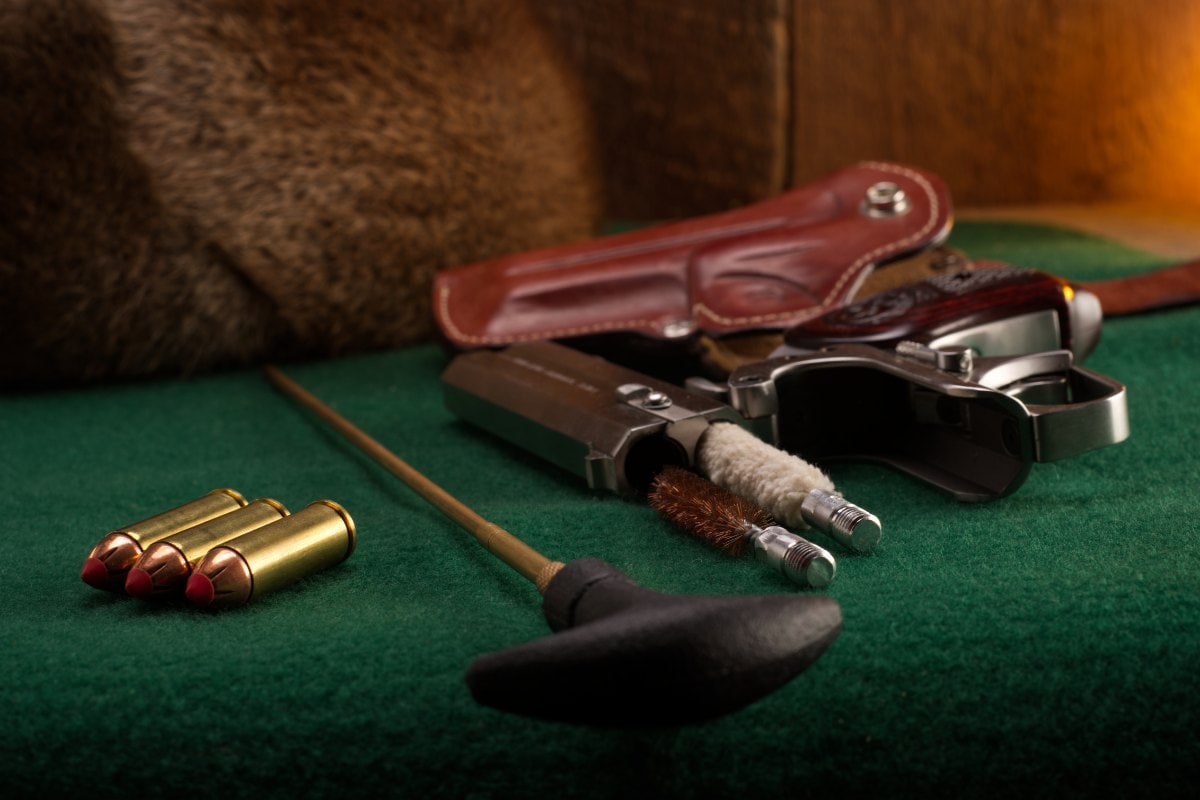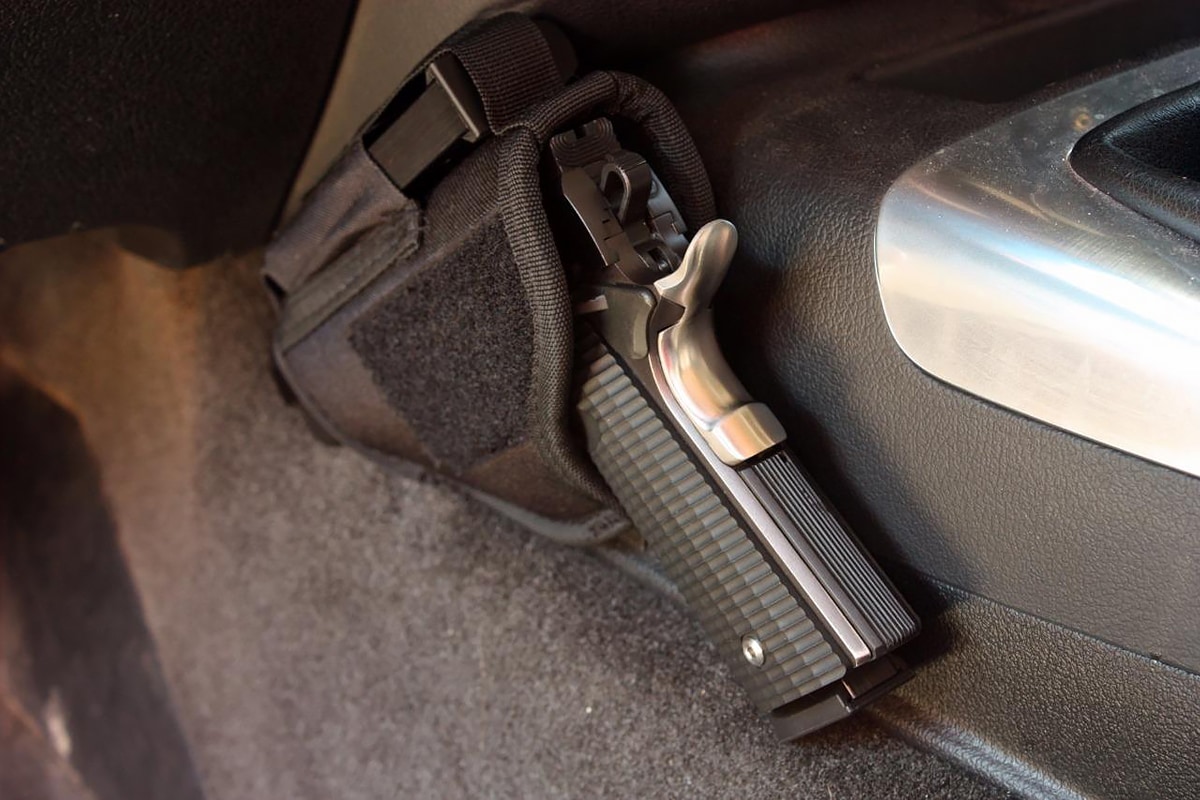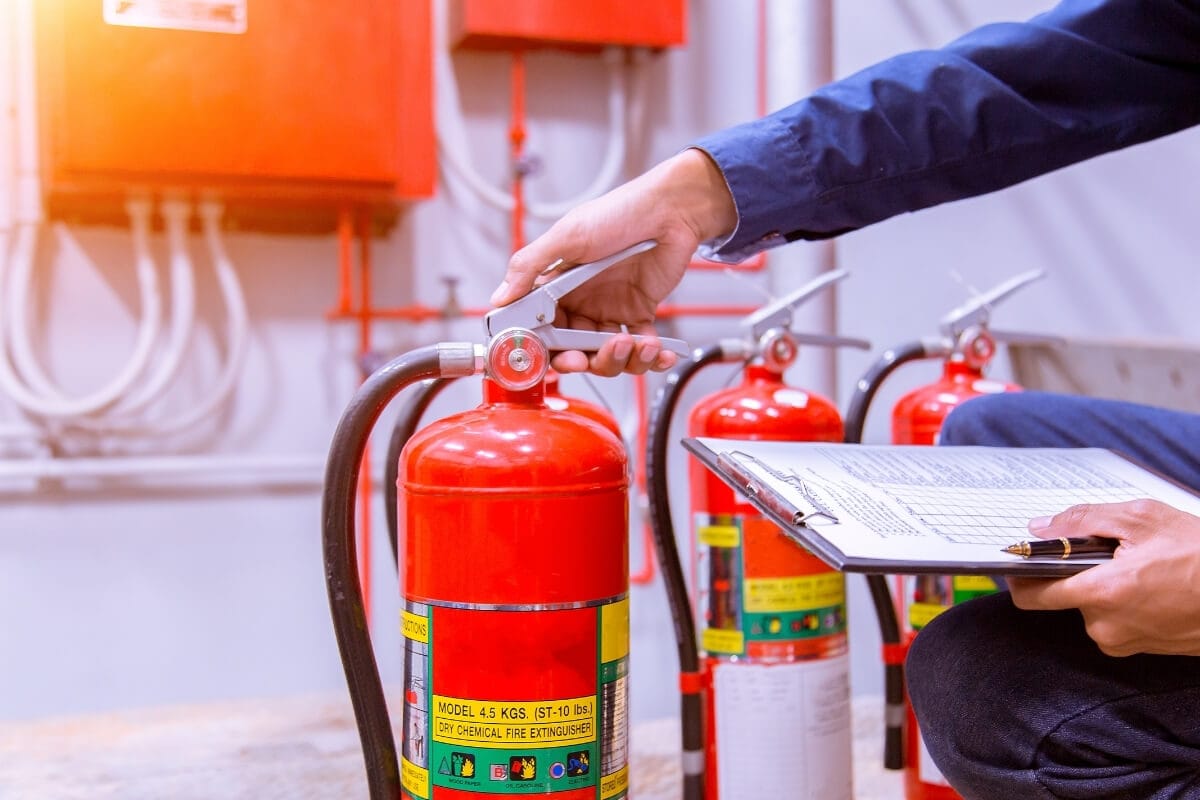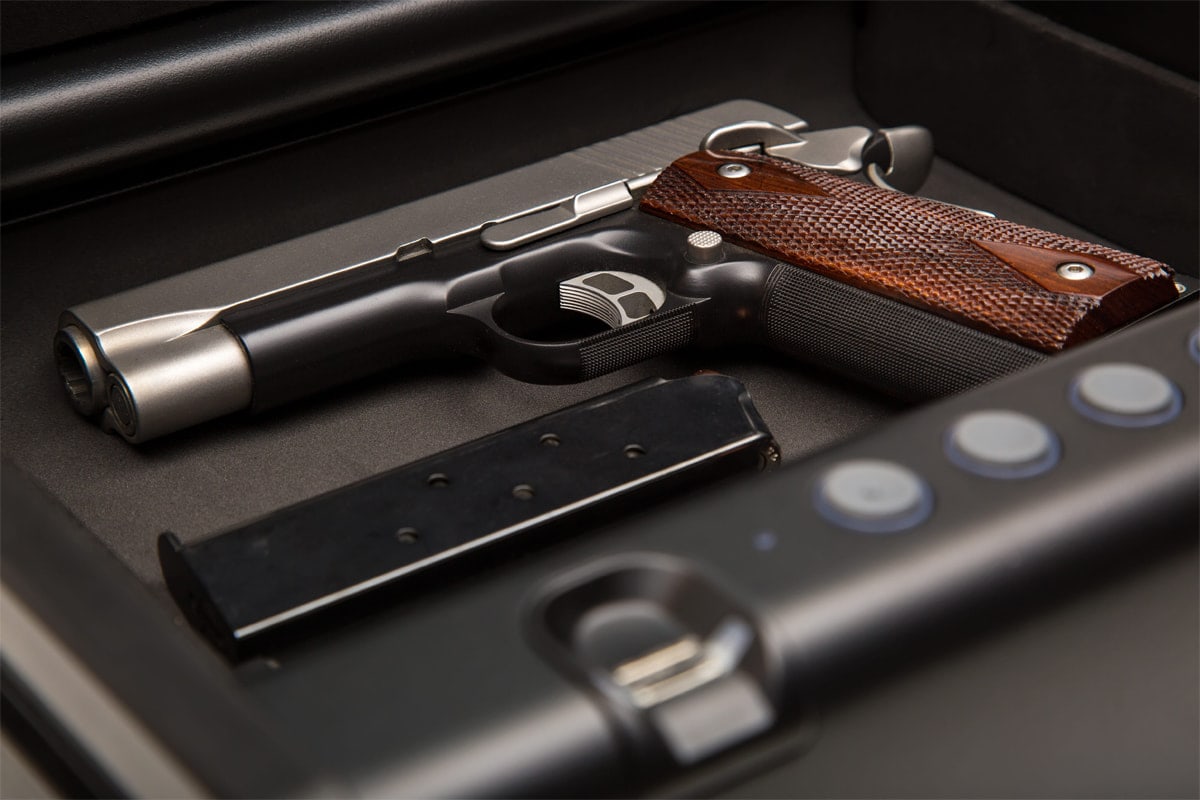Look at any holster today and you’ll find that its design is derived from one of two basic styles. The first, and probably the older, is often referred to as the wraparound system. Construction is of a single piece of leather folded in half, with the two lateral edges sewn together to form a pocket. In actual terms, the leather is wrapped around the pistol. A simple rollover loop on the back is added for use with a belt. This is probably the earliest type of holster that first appeared in the days of the Old West where they were probably cobbled together by saddlemakers to accommodate the single-action revolvers then in use.
Today’s variants of this system are a far cry from their humble origins! The biggest improvement with the modern wraparound holster is the incorporation of a leather or metal-reinforced mouth to prevent it from collapsing when the weapon is drawn, which facilitates one-handed re-holstering. A flat leather belt tab or loop is sewn onto the rear and works in conjunction with a tunnel loop or slot cut into its trailing edge to draw the holstered weapon well into the body for maximum concealment. This provides lateral stability and also allows the holster to be securely positioned over a trouser belt loop to avoid sagging on the belt from the weight of the gun. Sight rails or a sight channel incorporated into the spine of the holster eliminate the danger of snagging from the foresight when the weapon is drawn.
What are the drawbacks, if any, of the wraparound style? The main one, as voiced by some purists, is that it lacks an extra edge of concealment because of the three thickness of leather between the holstered weapon and the body, namely, the back wall of the holster, the thickness of the rear retaining tab or loop, and the belt itself. This criticism will be regarded by its millions of users as a gross exaggeration and an exercise in hair-splitting. But it is, nevertheless, true, though only a very minor flaw in what is an exceptionally efficient system.
The search for diversity produced a second basic design which came to be known as the flat silhouette or Pancake style holster. Here, two pieces of leather, one slightly longer than the other, are sewn together using two separate seams, one shaped to the profile of the pistol and the other straight. The space between the two seams thus forms a pocket to receive the weapon. Tunnel loops or belt slots, cut into both leading and trailing edges, allow the pancake holster to enjoy all the advantages of the wraparound system while an unobtrusive but effective sight channel is incorporated along the straight seam. Because of its flat construction and because there is no belt tab to the rear, it presents a sleeker, flatter overall appearance, with only two thickness of leather between the holstered weapon and the body, namely, the back wall of the holster plus the belt. This, according to the perfectionists, gives it a marked edge over the wraparound design for concealment.
There is, however, one big disadvantage with this system. Once the weapon is drawn, the curvature of the body pressing against the back wall of the holster, which normally aids weapon retention, now acts in a counter-productive manner and causes the holster to collapse or close up on itself. This can make one-handed re-holstering a bit of a problem, doubly so when wide-bodied autos such as Glocks and Sigmas are involved! Some manufacturers line their holsters with ABS plastic in an attempt to combat this effect, but while this may minimize it to a degree, the end result is more or less the same. So when it comes to the wide-bodied autos, try and steer clear of the pancake-style holsters!
For decades, these two styles have been the basis of every holster made throughout the world: belt, IWB, shoulder, SOB, deep concealment, ankle, pocket, you name it! Take a look at any holster you may happen to have handy. You’ll find that it’s either wraparound or pancake.
So here we have these two systems, both excellent, both work well, both have their followers, but both have minor flaws. If it were possible to combine the finer points of both into one single unit, wouldn’t that produce the ideal concealment holster? One that had the flat silhouette and low profile of a pancake holster but with the reinforced mouth of a wraparound to accommodate wide-bodied autos and for ease of one-handed re-holstering?
Well, the good news is that such a holster does exist, is readily available for most semi-autos, and has been on the market now for some time. In the final analysis, whether you choose the wraparound, the pancake or the combination of the two, all three styles of holster will function equally well in their own different ways, so it’s up to each individual to choose the variant best suited to his or her particular set of needs and circumstances.
The finest holster ever made will fail to realize its full potential if used with an inadequate belt. The cardinal rule is that the width of the belt must conform to the width of belt slots, or loops, on the holster. Use a belt narrower than the slots, and the holster will ride up every time an attempt is made to draw the weapon.
Now some people tend to get a little paranoid on this point, insisting that the width of the belt be exactly that of the slots. Lighten up. If you wear a 1 1/4″ belt with a holster that has 1 3/4″ slots then yes, you’re certainly going to have the problem described above. But if there is a variance of only 1/8″ or so, then don’t worry. Remember, we’re not making jewelry here.
So what points should we consider when contemplating the purchase of a belt for use with a concealment holster? Having it slightly curved or “Contoured” helps. This means that it will be comfortable from day one with no inconvenient breaking-in period. It should be firm enough to not roll over on itself, yet sufficiently supple to successfully adapt to the contours of a holster containing a weapon, so that the whole ensemble can blend in with the body.
A double-thick, back-to-back lined belt may be fine for IPSC, but not for concealment. Its stiff and unyielding nature would make it push out against the back wall of the holster, causing the weapon to stick out like the proverbial pea on a drum! Additionally, the extra thickness of leather on the belt would make the weapon protrude that much further away from the body.
When wearing a suit and carrying a concealed weapon, the ideal width of belt is 1 1/4″ or, at a push, 1 1/2.” Remember, the bad guys are probably better at reading signs than most people realize. Walk into a function in your best blue serge or grey pinstripe carrying a concealed weapon on a 1 3/4″ belt and you may as well be wearing a Day-Glo headband saying “I AM ARMED.” Definitely counter-productive!
Contrary to popular belief, a really wide belt is not essential to support the weight of a holstered weapon. Positioning the holster over a trouser loop will distribute the weight evenly and prevent any sagging. If the trouser loop is in the wrong place, get it moved. Remember that clothing should be adapted to conform to the weapon you carry, not vice versa!









